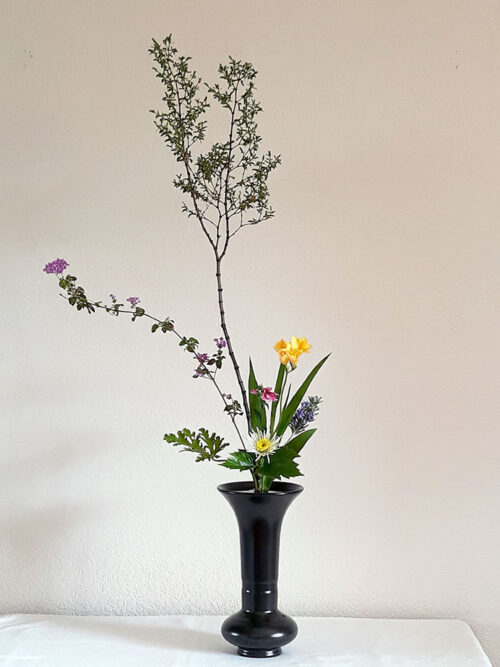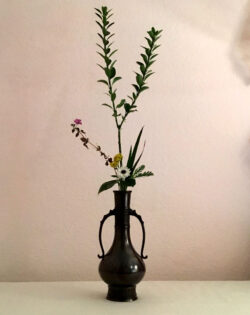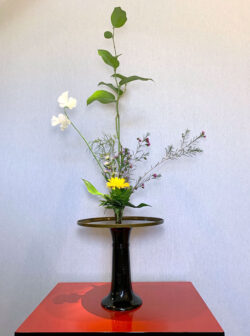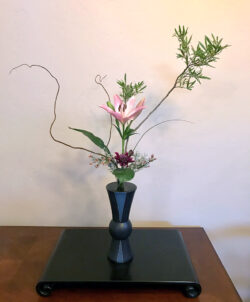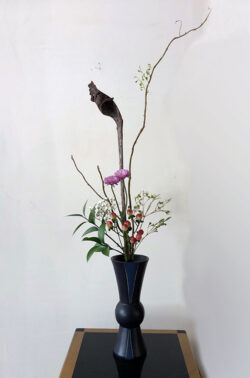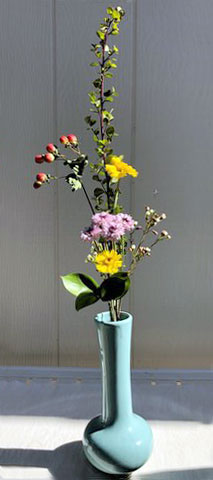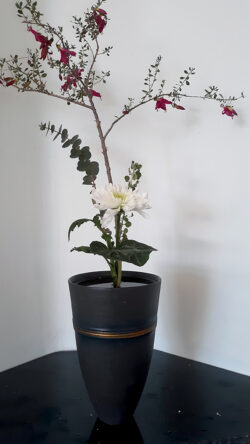Our workshop began with the presentation of certificates to Wanda LaLoggia (#7, Junkakan, Instructor of Ikebana 2nd grade); Susan Quinn (#1 and #2 Nyumon and Shoden); and Michele Nguyen (#5 Kasho, Teacher’s Assistant). Congratulations to all three of you.
We then dove straight into our lesson…tatehana or standing flowers. We learned about the three parts: Motogi (the main branch which is usually upright and straight and Shitakusa (all the rest of the arrangement), plus iroe which may be added to connect Motogi to the Shitakusa. And there must be a well-defined mizugiwa (waterline). “Depth” is also important
We found out that there can be great variations in arrangements since there are no strict rules. For example, Large flowers are usually not used, as this is a delicate arrangement. However, there can be times when a large flower completes the arrangement. And, komiwara (straws) are usually used to hold the arrangement in place, but a kenzan can also be used. And, there are special tatehana vases (small and narrow), but recently even low wide containers have been used.
Our sensei, Linnéa Storm, talked about all these points and showed all nine participants’ individual arrangements…lovely creations representing each participant’s interpretation of the tatehana art.

